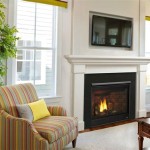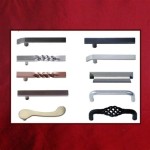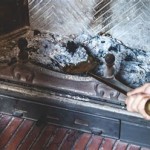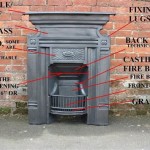Electric Fireplace Thermostat Not Working: Troubleshooting and Solutions
An electric fireplace offers a convenient and cost-effective alternative to traditional wood-burning fireplaces. It provides supplemental heat and aesthetic appeal without the hassle of wood, smoke, or extensive cleaning. A crucial component of an electric fireplace is the thermostat, which regulates the heat output to maintain a desired room temperature. When the thermostat malfunctions, the fireplace can become ineffective, uncomfortable, or even pose a safety risk. Understanding the common causes and potential solutions for a non-functioning electric fireplace thermostat is essential for maintaining the fireplace's optimal performance and safety.
A malfunctioning electric fireplace thermostat can manifest in various ways. The fireplace might fail to heat up at all, continue to heat even after reaching the set temperature, or exhibit erratic temperature fluctuations. Diagnosing the issue requires a systematic approach, starting with simple checks and progressing to more complex troubleshooting steps. This article will explore several potential reasons for an inoperative electric fireplace thermostat and provide detailed guidance on how to address each problem.
Power Supply and Basic Functionality Checks
Before delving into thermostat-specific issues, it's crucial to verify the basic functionality of the electric fireplace and its power supply. A seemingly faulty thermostat might be a symptom of a more fundamental problem. Begin by ensuring that the fireplace is properly plugged into a functioning electrical outlet. Test the outlet with another device to confirm that it is delivering power. Inspect the power cord for any signs of damage, such as fraying, cuts, or exposed wires. A damaged power cord should be replaced immediately by a qualified electrician to prevent electrical hazards.
Next, check the fireplace's main power switch. Many electric fireplaces have a main power switch located on the unit itself, often on the back or side panel. Ensure that this switch is in the "on" position. Some models also have a remote control that can be used to turn the fireplace on and off. If the fireplace is controlled by a remote, verify that the remote's batteries are fresh and that the remote is properly paired with the fireplace. Attempt to use the remote to turn the fireplace on and adjust the temperature settings.
If the fireplace still does not turn on, examine the circuit breaker or fuse that supplies power to the outlet. A tripped circuit breaker or blown fuse can prevent power from reaching the fireplace. Reset the circuit breaker or replace the fuse with a new one of the correct amperage. If the circuit breaker trips or the fuse blows repeatedly, it indicates a more serious electrical problem that requires the attention of a qualified electrician.
After confirming the power supply and basic functionality, observe the fireplace while attempting to adjust the thermostat. Note whether any lights illuminate, fans operate, or other indicators suggest that the fireplace is responding to the thermostat settings. This initial assessment can provide valuable clues about the nature of the problem.
Thermostat Calibration and Sensor Issues
Even if the fireplace is receiving power and appears to be functioning, the thermostat itself might be improperly calibrated or experiencing sensor issues. Thermostat calibration refers to the accuracy of the temperature readings displayed and maintained by the thermostat. An inaccurate thermostat can cause the fireplace to overheat or fail to reach the desired temperature, leading to discomfort and energy waste.
Many electric fireplaces have a calibration adjustment feature that allows users to fine-tune the thermostat's accuracy. Consult the fireplace's user manual for instructions on how to access and adjust the thermostat's calibration settings. Typically, the calibration process involves comparing the thermostat's temperature reading to an accurate external thermometer placed near the fireplace. If there is a significant discrepancy between the two readings, adjust the thermostat's calibration setting accordingly.
In some cases, the thermostat's temperature sensor might be faulty. The sensor is responsible for measuring the room temperature and relaying that information to the thermostat's control unit. If the sensor is damaged or not functioning correctly, the thermostat will not be able to accurately regulate the heat output. A common symptom of a faulty sensor is erratic temperature fluctuations or a complete failure to maintain a consistent temperature.
The location of the temperature sensor can also affect its accuracy. The sensor should be located in a position where it can accurately measure the average room temperature, away from direct sunlight, drafts, or other sources of localized heat or cold. Ensure that the sensor is not obstructed by furniture, curtains, or other objects that could interfere with its readings. If the sensor is easily accessible, gently clean it with a soft, dry cloth to remove any dust or debris that might be affecting its performance. If the sensor is suspected of being faulty, it might need to be replaced. However, replacing the sensor typically requires specialized knowledge and tools, and it is often best left to a qualified technician.
Internal Component Failures and Control Board Issues
If the power supply is confirmed to be working, the thermostat is properly calibrated, and the temperature sensor appears to be functioning correctly, the problem might lie within the electric fireplace's internal components, specifically the control board. The control board is the central processing unit of the fireplace, responsible for managing all of its functions, including the thermostat, heating elements, and display. A malfunctioning control board can cause a wide range of problems, including thermostat failure.
One potential cause of control board failure is overheating. Electric fireplaces generate heat, and if the internal components are not properly ventilated, they can overheat and sustain damage. Ensure that the fireplace is placed in a well-ventilated area and that the vents are not blocked by furniture or other objects. Regularly clean the fireplace's vents to remove any dust or debris that might be obstructing airflow.
Another potential cause of control board failure is electrical surges. Power surges can damage sensitive electronic components, including those on the control board. Protect the electric fireplace from power surges by plugging it into a surge protector. A surge protector can absorb excess voltage and prevent it from reaching the fireplace's internal components.
Identifying a faulty control board often requires visual inspection and electrical testing. Examine the control board for any signs of damage, such as burnt components, cracked solder joints, or corrosion. Use a multimeter to test the voltage and continuity of various components on the control board. However, it's important to note that working with electrical components can be dangerous, and it's crucial to take appropriate safety precautions. If not comfortable performing these tests, it is recommended to consult a qualified technician.
Replacing a faulty control board is generally a complex and potentially expensive repair. The control board must be compatible with the specific model of electric fireplace, and the replacement process often involves disassembling the fireplace and carefully connecting numerous wires and components. In some cases, it might be more cost-effective to replace the entire electric fireplace rather than attempting to repair the control board.
In conclusion, a non-functioning electric fireplace thermostat can be attributed to a variety of causes, ranging from simple power supply issues to complex internal component failures. A systematic approach to troubleshooting, starting with basic checks and progressing to more advanced diagnostic tests, is essential for identifying the root cause of the problem. While some issues, such as power cord damage or thermostat calibration, can be resolved relatively easily, others, such as control board failure, might require professional assistance or even replacement of the entire unit. Regular maintenance, including cleaning the vents and protecting the fireplace from power surges, can help prevent thermostat problems and extend the lifespan of the electric fireplace.

Electric Fireplace Common Problems And Their Solutions

Electric Fireplace Not Blowing Heat

Electric Fireplace Common Problems And Their Solutions

Common Electric Fireplace Problems And How To Solve Them

Why Your Electric Fireplace Stopped Working

How To Fix The Flames In Your Electric Fireplace Magikflame

Reasons Your Gas Fireplace Isn T Working Experts

Topbuy 25 Electric Fireplace Wall Recessed Heater W Remote Control Touch Screen Thermostat Timer Com

64cm Electric Fireplace Wall Mounted With Remote And Thermostat Costway

Electric Fireplace Faq Sylvane








